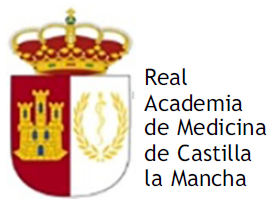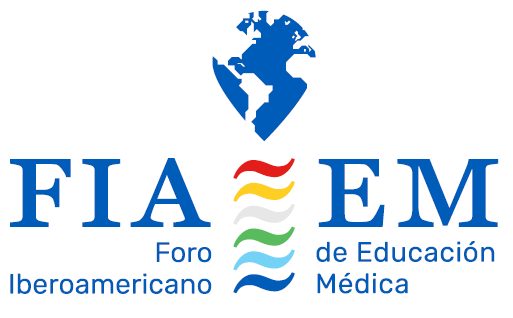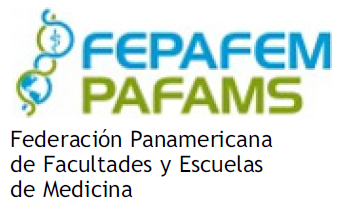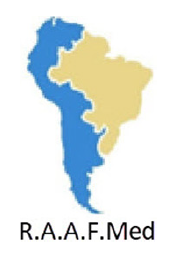The scope of medical education (ME) as an autonomous field of study is still under debate. The present study aimed to identify publications addressing the topic of ME, published in international medical journals, by Portuguese authors, alone or in collaboration with foreign colleagues.
MethodsPublications were retrieved from Scopus and Web of Science, between 2013 and 2022. Each publication was identified by title, name, and affiliation of the corresponding author. Affiliation of all authors was also taken into consideration to detect networks. Titles were used to identify subjects, complemented by keywords and abstract. Journal Citation Reports and Scimago Journal Rank indexed journals in the education category were identified and from these ME journals were selected.
We chose 29 journals from which 17 had publications from Portuguese’s authors in a total of 80 publications.
ResultsThe top journals in terms of productivity were BMC Medical Education, Medical Teacher, and Advances in Health Sciences Education. The Portuguese international cooperation involved Europe (United Kingdom, Spain, the Netherlands, and Ireland), North America (USA and Canada) and Oceania (Australia). Outside the Northen Hemisphere, cooperation involved mostly Brazil. Nationally, the dominant networks involved the Universities of Porto and Minho.
Five core areas were identified namely “medical education”, “medical student”, “health care personnel”, “medical school”, and “undergraduate medical education”.
ConclusionDespite the limitations of this study because the search was only focused on ME journals it showed a trend towards internationalisation of some Portuguese authors, particularly those who were also involved in established national networks.
El alcance de la educación médica como campo de estudio autónomo sigue siendo objeto de debate. El presente estudio tuvo como objetivo identificar las publicaciones que abordan el tema de la educación médica (EM), publicadas en revistas médicas internacionales, por autores portugueses, solos o en colaboración con colegas extranjeros.
MétodosLas publicaciones fueron recuperadas de Scopus y Web of Science, entre 2013 y 2022. Cada publicación fue identificada por título, nombre y afiliación del autor correspondiente. También se tuvo en cuenta la afiliación de todos los autores para detectar redes. Los títulos se utilizaron para identificar los temas, complementados por las palabras clave y el resumen. Se identificaron las revistas indexadas en Journal Citation Reports y Scimago Journal Rank en la categoría de educación y de ellas se seleccionaron las revistas de EM.
Se seleccionaron 29 revistas de las cuales 17 tenían publicaciones de autores portugueses en un total de 80 publicaciones.
ResultadosLas principales revistas en términos de productividad fueron BMC Medical Education, Medical Teacher y Advances in Health Sciences Education. La cooperación internacional portuguesa se centró en Europa (principalmente Reino Unido, España, Países Bajos e Irlanda), Norteamérica (EE.UU. y Canadá) y Oceanía (Australia). Fuera del hemisferio norte, la cooperación se centró principalmente en Brasil. A nivel nacional, las redes predominantes son las de las universidades de Oporto y Minho.
Medical education (ME) is relatively recent as an independent field of study and its scientific dimension has significantly increased since the middle of the twenty century. According to Lee,1 the annual publication increased from 279 articles in 1960 to 3760, in 2010. This was accompanied by a rise in the number of journals specialised in ME from 1–3 in 1960 to 11 in 2010. It is important to signal that more that 80% of all the articles labelled as related to ME in a MEDLINE search, during that time, were not published in specialised ME journals.
Two reviews2,3 on ME trends were performed in the beginning of the century, however, none of these addressed institutional and authors scientific networks. In addition, this identification of the trends was not followed by further analysis despite suggesting that ME should move from effective-driven research to a more theory and discovery-driven approach.
ME publications also play a significant role particularly in promoting and sharing contacts between different research groups and institutions, globally, thus enhancing national and international networks. However, as shown in a recent study,4 the great majority of contributors to those papers were from high-income countries (HICs) such as USA, UK, Canada, Australia, and Western Europe. These differences are largely due to political–cultural distinctions between the new and the old word. Although the Portuguese situation is not specifically mentioned in the paper, it is evident from an included world map entitled “Global Landscape of Medical Education Research” that the country had a very small international contribution to the number of ME scientific publications coming from Western Europe. Similar findings were reported by Morán-Mariños5 in a study in Latin America, which found a total of 850 original articles of which 49.1% had a Brazilian co-author, followed by Mexico, with 19.2%. The collaboration among Latin American countries was lower than those with authors outside the region. However, international collaboration represented only 19% of the total publication showing a lack of cooperation between countries of the new world and a modest degree of internationalisation.
These findings, stimulated us to perform an analysis of the situation in Portugal, using bibliometrics.
Bibliometric techniques and science mapping software tools are considered useful in providing a general idea of the scientific information on a topic, with several ways of data visualisation being applied to improve bibliometric analyses.6
The bibliometric approach7,8 is being increasingly used by the research community to evaluate the development and structure of scientific knowledge, research output and interrelations between researchers, journals, institutions, and countries.6,9 The importance of scientific collaboration networks among academic research is undeniable, making it possible to optimise resources and skills.8 The bibliometric analysis includes a performance analysis of contributions on a subject (numerical indicators) and an interaction analysis which allows detection of the scientific cooperation between the authors and their subjects of study.6
This paper aims to analyse the status of Portuguese international scientific publications on ME for a period of 10 years, between 2013 and 2022, combining bibliometric methods and using visual mapping to outline the overall framework and trends of networking in this field. This research intends to investigate what are the most productive authors, where they work, in which journals they publish and how they relate with each other, both nationally and internationally.
Material and methodsData collectionThe Journal Citation Reports (JCR) and the Scimago Journal Rank (SJR) do not include “Medical Education” as a subject category, therefore we have collected the lists of indexed journals in the Education category from JCR and SJR and selected the ME journals from those lists, based on the journals titles and scope note descriptions. Journals with a broader scope also publishing articles on the subject were excluded (e.g., Lancet, BMJ, NEJM), as well as specialised journals in areas ranging from basic sciences to clinical specialities.
A total of 29 journals were recovered with the purpose of identifying publications of Portuguese authors and their institutions, without addressing a citation’s analysis of their individual bibliographic performance.
The search was performed, in October 2023, in Scopus and Web of Scienc, using ISSN’s journals, for the 29 periodicals, between 2013 and 2022.
We have collected only articles and reviews, although we also looked at the overall scientific outputs (namely conference papers, letters, and meeting abstracts). In the case of studies involving medical students, we have accepted publications in which students from other health areas were included. No language filter was applied.
From the total of publications, it was possible to identify the Portuguese publications through the Scopus Country/Territory filter “Portugal” and Countries/Regions filter “Portugal” in Web of Science.
Data analysisThe duplicates were excluded, and the publications organised in three groups based on the nationality of the first author: all the authors were Portuguese (group A), first author Portuguese and remaining from other nationalities (group B), first author foreign and others from any nationality, including Portuguese (group C).
The information from each publication including bibliographical data such as title, authors, authors with affiliations, journal, publication years, abstract, author keywords, index keywords, and correspondence address was exported to Excel for standardisation and analysis which, due to the small number of publications, was carried out manually.10
Bibliometric analysis was performed using VOSviewer for constructing and visualising bibliometric maps.11,12 Three types of analysis of data were performed: countries, Portuguese institutions, and keywords.
This analysis of countries and Portuguese institutions was intended to identify the most productive Portuguese institutions. To do so, we analysed the number of articles published in each journal, together with identification of country affiliations for foreign and institutional affiliation for Portuguese institutions.
We used network diagrams (with colour-coded clusters), to explore co-authorships between countries and between Portuguese institutions. This was also used to identify the co-occurrence of all keywords (authors' keywords and indexed keywords). Networks of co-occurrences of keywords or co-word analysis were based in the number of publications from the dataset in which both keywords occur together.
To standardise the terms (singular, plural, and synonyms), a thesaurus was created regarding institutions and keywords. To fully identify Portuguese institutions, the affiliation’ names were normalised.
ResultsJournalsFrom the 29 journals (see Table 1), only 17 had Portuguese publications (articles and reviews), and from these, we retrieved 71 articles and 9 reviews in a total of 80 publications,1 in English, that were considered for analysis. Nine documents were excluded during screening because their content did not match the inclusion criteria: four did not address ME (osteopathy, physiotherapy, and nursing) and five were not considered original articles or reviews (table of contents, short communication, commentary, and study protocol).
List of analysed medical education journals.
| Journals | ISSN | Country | Total PT articles & reviews | Included PT articles & reviews |
|---|---|---|---|---|
| Academic Medicine | 1040-2446 | United States | 1 | 1 |
| Advances in Health Sciences Education | 1573-1677 | United States | 9 | 9 |
| Advances in Medical Education and Practice | 1179-7258 | United Kingdom | 3 | 3 |
| BMC Medical Education | 1472-6920 | United Kingdom | 33 | 30 |
| Educacion Medica | 1575-1813 | Spain | 5 | 4 |
| International Journal of Medical Education | 2042-6372 | United Kingdom | 5 | 5 |
| JMIR Medical Education | 2369-3762 | Canada | 1 | 1 |
| Korean Journal of Medical Education | 2005-727X | South Korea | 1 | 1 |
| Medical Education | 1365-2923 | United Kingdom | 5 | 4 |
| Medical Education Online | 1087-2981 | United Kingdom | 1 | 1 |
| Medical Science Educator | 2156-8650 | United States | 1 | 1 |
| Medical Teacher | 0142-159X | United Kingdom | 15 | 14 |
| MEDICC Review | 1527-3172 | United States | 1 | 1 |
| Perspectives on Medical Education | 2212-2761 | Netherlands | 4 | 4 |
| Teaching and Learning Medicine | 1040-1334 | United States | 1 | 1 |
| AEM Education and Training | 2472-5390 | United States | 0 | 0 |
| Bulletin, Postgraduate Institute of Medical Education and Research, Chandigarh | 0302-2404 | India | 0 | 0 |
| Education in Medicine Journal | 2180-1932 | Malasya | 0 | 0 |
| Focus on Health Professional Education - A Multidisciplinary Journal | 2204-7662 | Australia | 0 | 0 |
| GMS Journal for Medical Education | 2366-5017 | Germany | 0 | 0 |
| International Journal of Academic Medicine | 2455-5568 | United States | 0 | 0 |
| Investigacion en Educacion Medica | 2007-5057 | Mexico | 0 | 0 |
| Journal of Advances in Medical Education and Professionalism | 2322-2220 | Iran | 0 | 0 |
| Journal of graduate medical education | 1949-8349 | United States | 0 | 0 |
| Journal of Medical Education and Curricular Development | 2382-1205 | United Kingdom | 0 | 0 |
| Journal of Medical Education Development | 2345-4393 | Iran | 0 | 0 |
| Revista Cubana de Educacion Medica Superior | 08642-141 | Cuba | 0 | 0 |
| Total | 86 | 80 | ||
Six of the 17 journals were from the USA and the same number was from the UK. Two were from European Union, one from the Netherlands, and the other from Spain. The remaining three were from India, Canada, and South Korea.
The highest number of publications was from UK journals: 30 from BMC Medical Education and 13 from Medical Teacher, amounting to more than 50% of the total. The journal from the USA with the higher publication number was Advances in Health Sciences Education, with 9 articles.
International collaborations: CountriesTo analyse cooperation between countries, we applied the VOSviewer using n=1 as the minimum number of occurrences per country which allowed the identification of 34 countries involved (Fig. 1).
Using this approach, it was possible to identify seven clusters corresponding to the author´s countries of affiliation. The red cluster integrates Canada with seven publications and China, Morocco, Honduras, Georgia, Norway, and Poland with one publication each. In the green one, Brazil stands out with 13 publications, followed by Spain with five, Chile and Colombia with two, and Mexico, Argentina, and Cyprus with one publication each. The dark blue cluster includes Germany, Pakistan, and Slovenia, with two documents each, and Sweden, New Zealand, and Thailand with one publication each. In the yellow cluster, the Netherlands stands out with 10 publications and Australia with seven, followed by Malaysia with four, Indonesia with two, and South Africa with one. In the purple cluster, it is possible to identify UK as the country with the highest volume of publications (18), linked to Ireland with five, and to Iran with one. The USA is the country with the second highest number of publications (17) and is part of the light blue cluster together with Italy and Saudi Arabia (one publication each). Finally, the orange cluster with Portugal with the 80 publications, as the core, along with Angola and Equator (one publication each).
National collaborations: Institutions and authorshipsA map was made of co-authorship of Portuguese institutions, represented by the main institution (namely universities and its medical school), using n=1 as the minimum number of occurrences per institution, and displayed 367 institutions. After creating a thesaurus to standardise the terms (affiliation variations), 246 institutions were selected, from which those referring to foreign institutions were removed, resulting in a representation of 45 institutions.
The institutions with larger productivity and higher number of collaborations were the Universities of Porto (33 documents) in the yellow cluster and University of Minho (20), in the dark blue cluster, usually identified by their medical units (Fig. 2).
Networks of collaboration between main Portuguese institutions.
Clusters: yellow cluster: up - University of Porto (fmup - UP Faculty of Medicine, aces sintra - Grouping of Health Centres, Sintra; ua - University of Aveiro); dark blue cluster: um, braga: University of Minho (3b's - Biomaterials, Biodegradable Materials and Biomimetics, Icvs/3b's - Institute for Research in Life Sciences and Health / Biomaterials, Biodegradable Materials and Biomimetics, IPO, porto - Portuguese Institute of Oncology, Porto, portucalense un - University of Portucalense, ualg faro - University of the Algarve); red cluster: ul, lisboa - University of Lisbon (chlc, lisboa - Central Lisbon Hospital Centre, iscte, lisboa - Higher Institute of Labour and Business Sciences, iuem, monte Caparica - Egas Moniz University Institute, esel, lisboa - Lisbon Higher School of Education, unl, lisboa - NOVA University Lisbon, abc, faro - Algarve Academic Centre for Biomedical Research and Training; green cluster: aces baixo vouga, aveiro and chucb, covilha - University Hospital Centre of Cova da Beira; light blue: uc, coimbra - University of Coimbra, ubi, Covilhã - University of Beira Interior, usf c certoma, coimbra - Family Health Unit of Caminhos do Cértoma, Coimbra; orange cluster: chuc, coimbra - Coimbra Hospital and University Centre tand chlc, lisbon - Lisbon Central Hospital Centre.
The University of Lisbon (15), red cluster, through its medical school, had a lower productivity and less co-collaborations followed by even two smaller networks (again from medical schools), the first one linking the Universities of Coimbra (7) and Beira Interior (6) both in the light blue cluster, and the second one linking NOVA University Lisbon (6), in the red cluster, and the University of Algarve (3). In some cases, there are also connections between these networks and other higher education institutions (Portucalense University or Egas Moniz School of Health and Science), with hospitals from Lisbon (Santa Maria and São José) as well as from Coimbra, and also health centres or other institutions from the health system (ACES Sintra or ACES Baixo Vouga), as may be seen in legend of Fig. 2.
Concerning authorships the first authors were Portuguese in 50 publications (62,5%), either leading a full Portuguese team, (Group A), with 38 publications (or composed of mixed national and international team, (Group B), with 12, whereas the remaining 30 (Group C) were led by a foreigner and the teams were also mixed.
KeywordsAs mentioned in materials and methods, it was necessary to standardise the terms (singular, plural, and synonyms) using a thesaurus obtaining a total of 101 keywords, from which words referring to methodologies (e.g., Delphi study, focus group, questionnaire, and others), and locations (e.g., Portugal, Spain, and Europe), were removed, resulting in a representation of 63 words. The most frequently used keywords (author’s and indexed) in the sample were: “medical education (n=46), followed by “medical student” (n=38). Thereby, 5clusters of each different colour were generated to identify main areas.
As shown in Fig. 3, red cluster highlights “medical student” (n=38) and consists of 19 items, mainly “psychology” (n=18) and “empathy” (n=9).The blue cluster with 11 items is associated with “medical education” (n=47), mainly “education” (n=28), “curriculum” (n=19), “teaching” (n=15), or “learning” (n=14).The green cluster, organised around “health care personnel” (n=8) involves 14 items. In this cluster we also found mainly “leadership”, “medical profession” or “staff development” with 4 occurrences each. In the yellow cluster, we identified 11 items, related to “medical school” (n=21) and included mainly “student” (n=11). The purple cluster, which focused on “undergraduate medical education” (n=17) contained 8 items and “clinical competence” (n=16).
DiscussionThis study identified the Portuguese international productivity in ME and found that the highest number of publications, more than 50%, occurred in journals from the UK and the total number was 80, from which 71 were original articles and nine were reviews, nevertheless, we have also looked to the overall Portuguese scientific output, in the above selected journals, which included, namely conference papers, letters, meeting abstracts, and was extremely reduced or even absent. This may be due to the lack of a Portugues forum on ME and to the reduced participation of the Portuguese researchers in international ME meetings. Considering the nationality of the first author, the highest number was Portuguese, 50, out of which 38 articles were just from Portugal, followed by 30 with a foreigner as first author. The highest numbers of international co-authors were from Brazil, UK, USA, Canada, Australia, and the EU (the Netherlands, Spain, and Ireland). More recently, co-authors from other countries were identified, namely from China, Iran, and Columbia, but in a very limited number. This weak internationalisation pattern is based in collaborations with HIC, apart from Brazil. A similar pattern was found in the study by Morán-Mariños,5 in Latin America, except that Portugal shows a higher number of publications with foreign authors. Nevertheless, the main international Portuguese networks are related to a limited number of HIC (UK and USA), with less involvement of European countries, except for the Netherlands and Spain with 10 and five publications, respectively.
The most productive networks were identified in medical institutions linked to the Universities of Porto and Minho, followed by smaller groups from the University of Lisbon, NOVA, Coimbra, Beira Interior, and Algarve. The most productive authors followed a similar pattern of geographical distribution and were also from Porto and Minho. The keyword networks identified five clusters the larger one being “medical education” followed by “medical students”, “medical schools”, “health care personnel”, and the smallest being “undergraduate medical education”.
As pointed out by Doja13 and to avoid the use of absolute numbers to assess publication productivity, we divided the number of publications by the number of medical schools in each country, identified using the World Directory of Medical Schools14 (2022 data). This exercise, based on the results from BMC Medical Education, the journal with the highest number of Portuguese publications, allowed the identification of different country groups ranging from those with high productivity and with a small number of medical schools, such as Canada, the Netherlands, Australia, and Ireland, giving ratios of publications ranging between around 30 and 16, to the UK and the USA with high productivity and a higher number of medical schools with ratios of 9 and 4.3, respectively. Portugal with a ratio of 3.75 (30 publications and 8 medical schools), is above Spain (1.7), Italy (1.04), and Brazil, a country with 363 reported medical schools, giving a ratio of 0,17. These results should be regarded with caution because medical schools are very different, even within the same country, but the data show that HIC countries with fewer medical schools are the ones with higher number of publications in ME, at least in BMC Medical Education. In this context, the higher Portuguese co-authorships could reflect an openness from those institutions to internationalisation and not a local strategy to publish abroad. Nevertheless, at least in the case of Minho, there was a simultaneous increase of both national and international publications probably due to the existence of a local strategy of internationalisation. The relation with low- and medium-income countries in ME, is mainly with Brazil and very scarce with the Portuguese Speaking countries in Africa as shown in the present study which found just one joint co-authorship.
The analysis of the keywords showed that Portuguese authors are in line with the major international publication themes particularly in studying the individual characteristics of medical students, the evaluation of student’s performance, clinical and communication skills, clinical reasoning, and patient simulation. Less work was published on curriculum and teaching issues. Even more scarce were the studies addressing issues of health care personnel involving leadership and staff development. In the case of a small number of publications, particularly those with a foreigner as the first author, it was clear that the studies involved Portugal just a bystander with little impact on promoting ME scientific projects in Portuguese institutions.
The leadership of the institutions from the Universities of Porto and Minho reflects a broad commitment to ME which is expected to prevail. The other smaller networks are mostly based on local initiatives and need to be followed to see if they are just the expression of “on–off” pattern, reflecting individual efforts which last for a very limited period and are not oriented to be applied in other settings.
Despite the limitation of having used just specialised international ME journals, this study shows, for the first time in Portugal, what are the national and international networks which publish in ME. As pointed out by Rotgans,3 most publications study the effectiveness of existing approaches rather than discovering new ones. This is particularly evident in undergraduate ME pointing to the need to encourage ME research in other populations, such as physicians and residents, which is necessary to develop strategies for continuing ME.5
Ethical disclosuresThe authors declare that no experiments were performed on humans or animals for this study.















